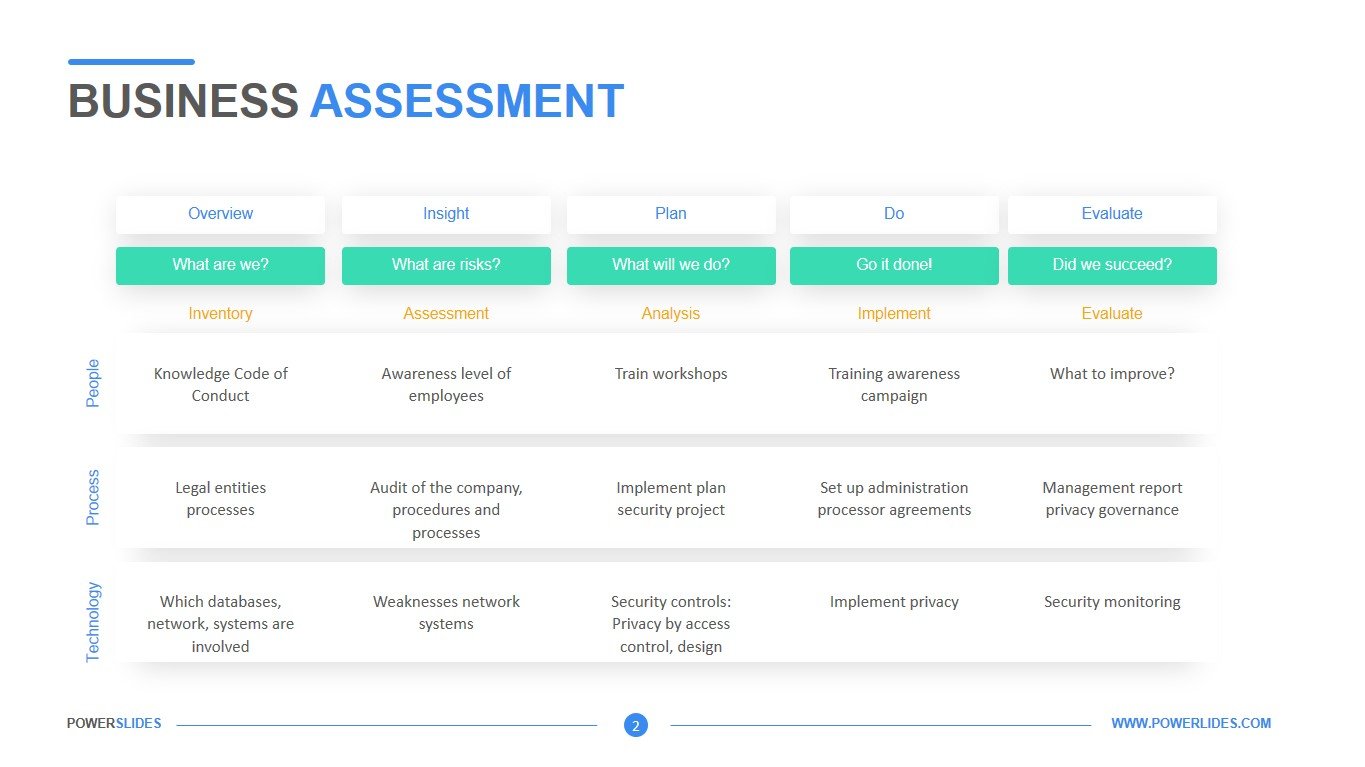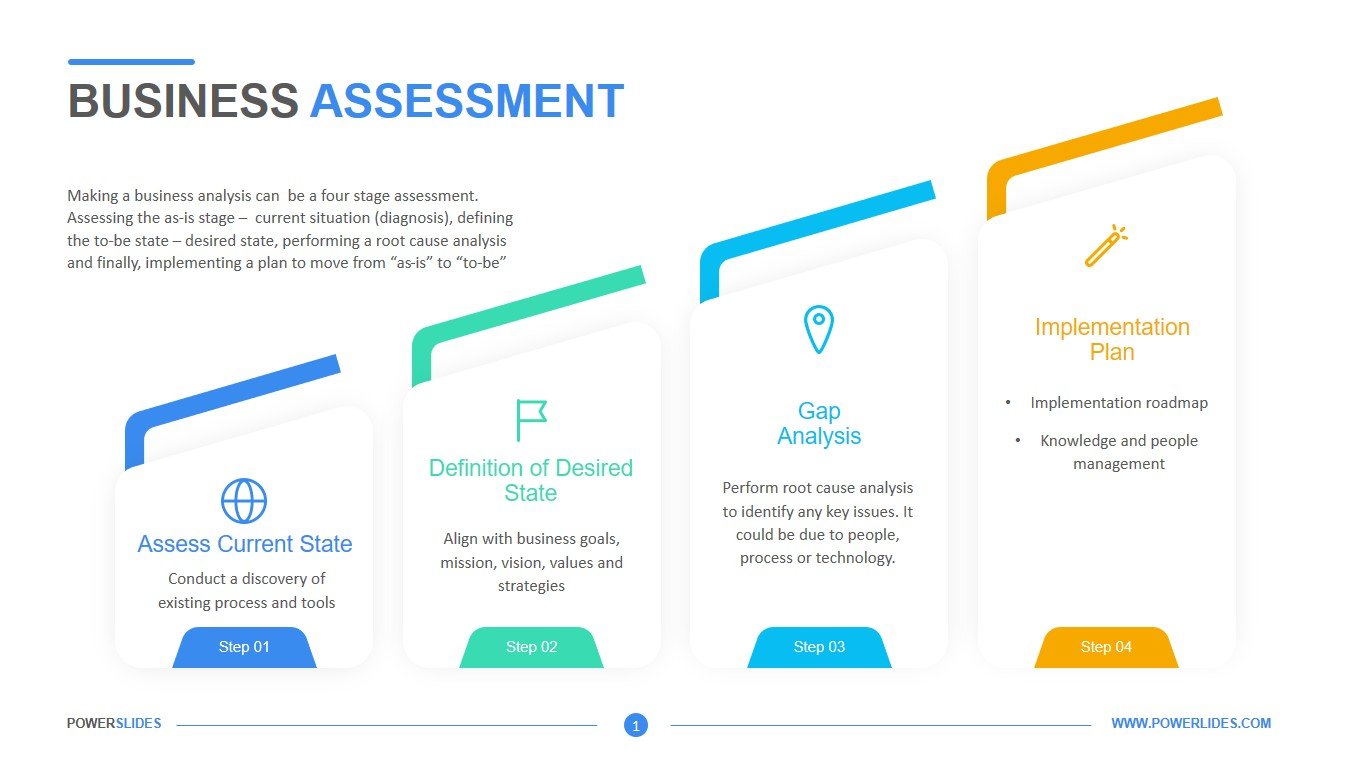Absolutely! Let’s craft a comprehensive 2500-word article on business assessment templates, incorporating your request to use `
` or `
` tags instead of “ for subheadings.
In the dynamic landscape of modern business, staying ahead of the curve requires more than just intuition. It demands a structured, data-driven approach to understanding your organization’s strengths, weaknesses, opportunities, and threats. This is where business assessment templates come into play, serving as invaluable tools for strategic planning and decision-making.

A business assessment template is a standardized framework designed to evaluate various aspects of a business, providing a comprehensive snapshot of its current state and potential for growth. These templates are versatile, adaptable, and can be tailored to assess specific areas, such as financial performance, operational efficiency, market positioning, and human resources.
Objective Analysis: Templates promote objectivity by providing a structured approach to data collection and analysis, minimizing bias and subjectivity.

Business assessment templates are diverse, catering to various needs and objectives. Here are some common types:
SWOT Analysis Template
The SWOT (Strengths, Weaknesses, Opportunities, Threats) analysis is a fundamental tool for strategic planning. It helps businesses identify internal and external factors that can impact their performance.
Strengths
Internal factors that give the business a competitive advantage.
Weaknesses
Internal factors that hinder the business’s performance.
Opportunities
External factors that the business can capitalize on.
Threats
External factors that pose a risk to the business.
Financial Assessment Template
This template evaluates the financial health of a business, analyzing key metrics such as revenue, profitability, cash flow, and debt.
Profit and Loss Analysis
Review of income statements to assess revenue and expenses.
Balance Sheet Analysis
Examination of assets, liabilities, and equity to determine financial stability.
Cash Flow Analysis
Assessment of the movement of cash into and out of the business.
Ratio Analysis
Calculation of key financial ratios to evaluate performance.
Operational Assessment Template
This template focuses on evaluating the efficiency and effectiveness of business operations, identifying areas for improvement in processes and workflows.
Process Mapping
Visual representation of key business processes.
Efficiency Analysis
Evaluation of resource utilization and productivity.
Quality Control
Assessment of the effectiveness of quality assurance measures.
Supply Chain Analysis
Review of the flow of goods and services from suppliers to customers.
Market Assessment Template
This template analyzes the market landscape, evaluating factors such as market size, competition, customer behavior, and industry trends.
Market Segmentation
Identification of distinct customer groups.
Competitive Analysis
Evaluation of competitors’ strengths and weaknesses.
Customer Analysis
Understanding customer needs, preferences, and behavior.
Industry Trend Analysis
Monitoring emerging trends and technologies.
Human Resources Assessment Template
This template evaluates the effectiveness of human resources practices, including recruitment, training, performance management, and employee satisfaction.
Recruitment and Selection
Assessment of the efficiency of hiring processes.
Training and Development
Evaluation of the effectiveness of employee training programs.
Performance Management
Review of performance appraisal systems and feedback mechanisms.
Employee Satisfaction
Measurement of employee morale and engagement.
Clear Objectives: Define the specific goals and objectives of the assessment.
1. Define the Purpose: Clearly articulate the purpose of the assessment and the specific areas you want to evaluate.
2. Identify Key Metrics: Determine the relevant KPIs that will provide insights into the performance of the business.
3. Choose Data Collection Methods: Select the most appropriate methods for gathering data.
4. Develop a Structured Framework: Create a clear and organized template with sections for each area of assessment.
5. Include Rating Scales or Checklists: Use rating scales or checklists to standardize the evaluation process.
6. Provide Space for Comments and Recommendations: Allow for qualitative feedback and actionable insights.
7. Test and Refine: Pilot test the template and make necessary adjustments based on feedback.
Regular Assessments: Conduct assessments regularly to track progress and identify emerging issues.
Business assessment templates are indispensable tools for organizations seeking to achieve sustainable growth and success. By providing a structured and objective approach to evaluating performance, these templates enable businesses to identify key issues, make informed decisions, and drive continuous improvement. Whether you’re conducting a SWOT analysis, financial assessment, or market analysis, leveraging the right template can provide valuable insights and guide your organization toward its strategic goals. Remember that the value of these templates comes from consistent usage, and the implementation of the resulting data.

